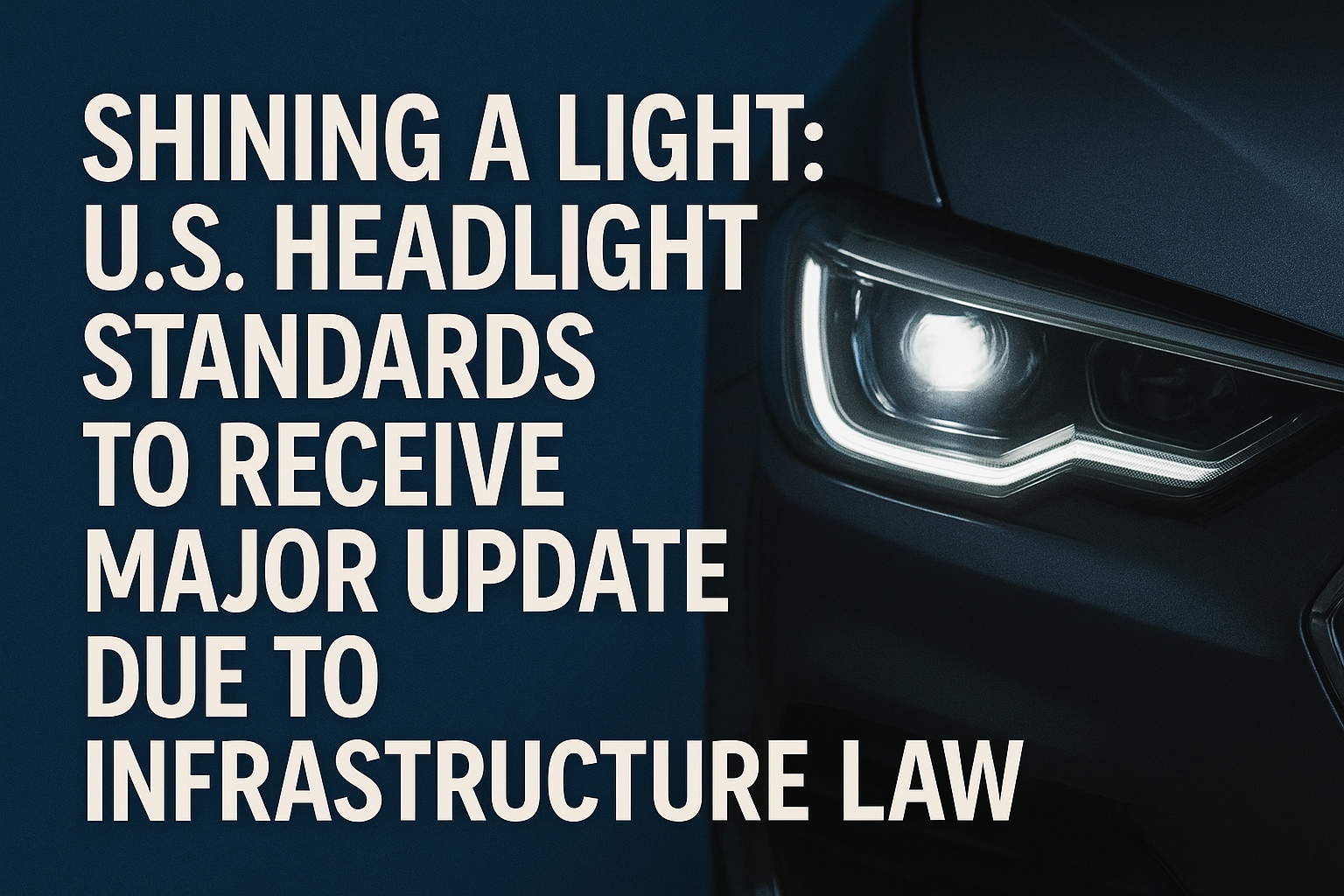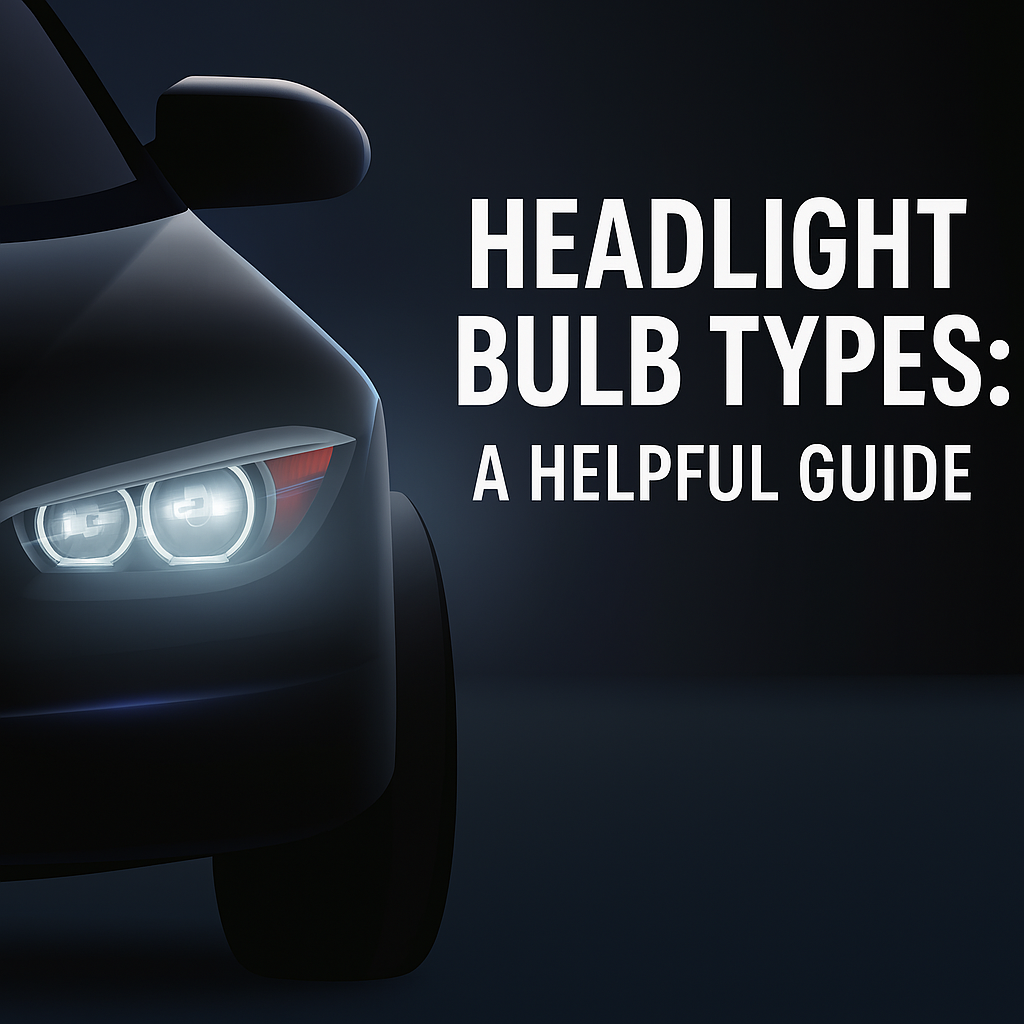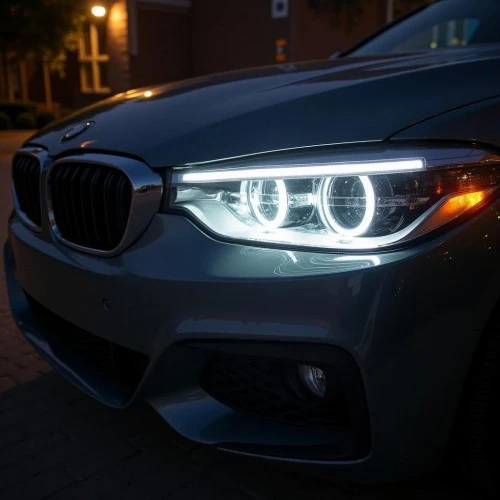U.S. Headlight Standards to Receive Major Update Due to Infrastructure Law
Upload Time:
Mar 30, 2025
The U.S. has long been slow to allow interesting and potentially better headlight technology.

When it comes to headlight technology, the U.S. and its Federal Motor Vehicle Safety Standards (FMVSS) regulations
have always been slow to adapt, making it impossible for systems like the adaptive matrix headlights on non-U.S. Audi
A8 sedans to illuminate our roads. While the rest of the world is enjoying the latest features to light up the road with
adaptive headlights, the U.S. is stuck with Stone Age non-adaptive headlights. This is nothing new; while the world
was enjoying replaceable halogen bulbs as early as 1967, the U.S. was still using sealed headlights. In fact, led bulbs
weren't even approved for use in the US until 1997. Yes, the US is that far behind.
Now it appears that thanks to a new infrastructure bill passed and signed into law by the U.S. Congress, it's finally
time to start seeing newer headlights on U.S. market cars.
Highlights Of LED Car Lights
When the "horseless carriage" was first introduced to the public, we borrowed what we knew, a carriage with horses
to light the way ahead, but problems soon arose when the car began to reach speeds faster than the horses could pull.
We actually outgrew the carriage lights because it didn't provide enough light ahead to drive safely. Electric lights were
installed in cars as early as 1898, but their use was limited by rapidly burning filaments and generators that did not
produce enough power. It wasn't until 1908, with the introduction of the No-Double car, that headlights became
standard equipment.
"Tilt" headlights, also known as low beams, would be introduced in 1915, but did not become standard until 1917,
thanks to Cadillac. This lowering of driving lights was not accomplished by physical leverage until 1924, when BiLux
created the first bulb with both low and high beams in one bulb. In 1940, the U.S. required a 7-inch round sealed-beam
headlight on each side and locked us into that standard until 1957, when smaller 5.75-inch sealed-beam lamps were
allowed. Then in 1974, U.S. cars were allowed to have rectangular sealed beam headlights. Until the 1980s, the U.S. was
stuck with the poor light quality of these units until replaceable halogen bulbs in matching housings were allowed. the
1990s saw the BMW 7 Series and the 1996 Lincoln Mark VIII finally appear with high-intensity discharge (HID) lamps.
At the same time, the rest of the world enjoyed many advances in headlight technology, and most headlights were legally
produced abroad as soon as they were introduced. As a result, the United States was always a step behind. While the
U.S. stuck with sealed headlights, the world had already moved to replaceable bulbs. While the world was taking advantage
of LED lights, the U.S. was limited to halogen lights.
OEM ODM LED Headlights In The US
LED lights are not illegal except when it comes to headlights. You can use LEDs in unregulated auxiliary lights. side markers
are A-OK. what about brake lights? You might blind the driver behind you, but they are legal. Fog lights are also allowed, just
like those super bright LED off-road lights you install on mall crawlers.
However, when it comes to being your primary headlights in the U.S., they must remain in the factory configuration, whether
sealed beam, HID, or replaceable halogen bulbs in the housing. If your car was fitted with LEDs from the manufacturer, then,
and only then, are they legal.
What The Infrastructure Bill Adds
While it's potentially not going to change what's illegal now, as far as installing that Euro-legal LED headlight housing into your
otherwise U.S.-legal Audi R8, the door is opening to allow for more technology forward lighting to be introduced in America.
As reported by The Drive, section 24212 of HR 3684—the Infrastructure Investment and Jobs Act and signed into law on
November 16, 2021—is simply titled "Headlamps." and states, "Not later than 2 years after the date of enactment of this Act,
the Secretary shall issue a final rule amending Standard 108."
Standard 108 refers to is the part of the FMVSS that mandates all lighting on all federally legal vehicles and is titled "Lamps,
reflective devices, and associated equipment." These rules not only dictate what colors lamps must be and where they must
be used, but also what types of headlight technologies are legal on U.S.-market vehicles.
It's More Than Just What Headlights To Use
However, the amending of Standard 108 dictated in the infrastructure bill could affect more than just allowing better adaptive
headlights—as we've seen from Audi and its Digital Matrix Headlight system—as the passage covers everything from testing
procedures to design to function, which is why you can't turn on your high beams on with any other forward light operating.
This means the FMVSS will now be required to set new guidelines within two years that meet the Society of Automotive
Engineers (SAE) J3069 standard that "provides test procedures, performance requirements, and design guidelines for adaptive
driving beam (ADB) and associated equipment." There is currently no stated design parameter or testing procedure for adaptive
lights in Standard 108—despite one having been adopted by the SAE in 2016—and why, technically, many ADBs are not legal in
the U.S.
These lights did not pass the NHTSA's requirement on low beam lighting—because it had an in-between where the high beams
could stay on and wasn't allowed under Standard 108—but now it seems that they are willing to let this system finally come to
the U.S. While it hasn't been turned into a final rule in the FMVSS, the petition was granted and has now paved the way for other
makes to apply their own adaptive headlights on their vehicles. The final rule is set to be approved in 2023 per the Infrastructure
Bill that passed in 2021.
With new rules in place, there still won't be a Wild West of headlights and you probably still won't be able to legally swap halogens
for LEDs, but it will finally bring the U.S. up to date with current headlight technology. Of course, as history has shown, staying up
to date is another story.
This story was originally published November 23, 2021, and has since been updated to reflect new developments in the U.S. 's
transition to allowing more elaborate headlight technologies.
Relevant News








